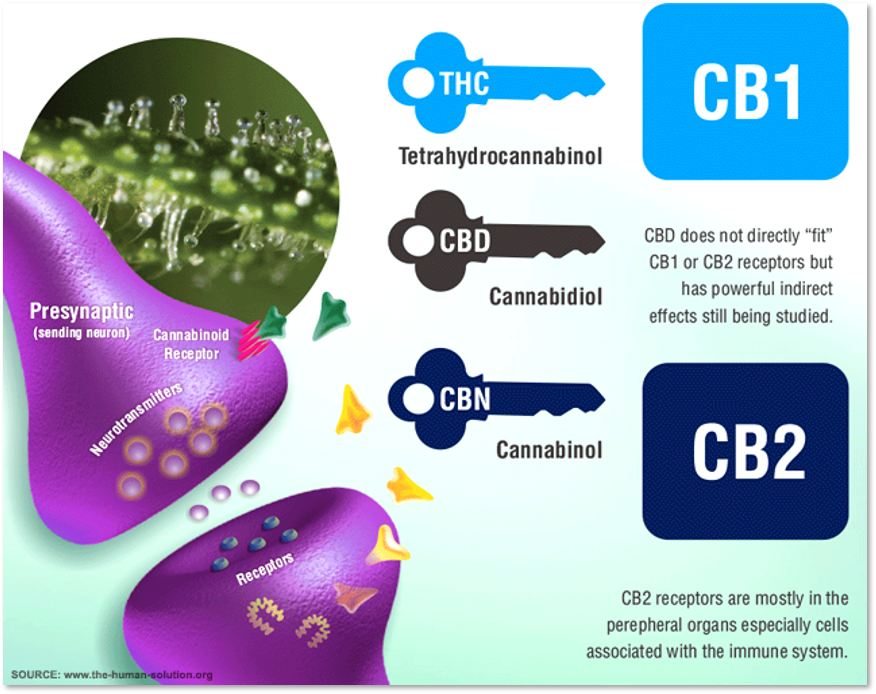The Endocannabinoid System (ECS)
- Receptors (proteins) are found on cell surfaces
- They receive information and respond to the environment around them
- When cannabinoids attract to a receptor, a signal is sent, which allows a function to take place
- CB1 receptors are primarily found in the brain and CNS (central nervous system)
- CB2 receptors are mostly in the peripheral organs (especially cells associated with the immune system)
- Controls 365 receptors around the body
Researchers are still trying to wrap their minds around the endocannabinoid system; how it functions and its role in our overall health. After all, it wasn’t until the 1990s that scientists inadvertently discovered the body’s CB1 receptors within the brain and central nervous system when attempting to determine what effects THC have on the human body. It’s becoming clear that the endocannabinoid system is responsible for balancing many of our body’s regulatory and immune system functions.
1. Most medical professionals have little to no knowledge of the body’s ECS
In a 2013 survey, appropriately titled “Ignorance Is Not Bliss,” researchers found that only “13 percent of U.S. medical schools teach the endocannabinoid system to future doctors.”
Cannabis research is limited primarily due to its federally illegal status, which prevents government institutions like the FDA from conducting clinical studies. But medical cannabis research is expanding and more patients are demanding access, so there’s a good chance that teaching ECS curriculum to medical students may be mandatory in the upcoming years.
2. The endocannabinoid system works in overdrive when diseases are present
Scientists have found that with a variety of illnesses, the ECS system shows increased activity and greater expression to restore the body’s natural balance.
3. The ECS is the reason why cannabis relieves so many medical conditions
Ingesting cannabinoids signals the body to create more endocannabinoids and build more receptors. Triggering this system naturally limits inflammation and repairs cells, among many other therapeutic benefits. The previously mentioned, “Ignorance Is Not Bliss” study reads:
The discovery of the ECS will replace the current medical system of managing and treating disease. Instead of management of symptoms after disease has occurred, we will prevent disease and cancer by manipulation of the ECS.
4. There are more endocannabinoid receptors outnumber other neurotransmitter receptors in the brain
Anandamide, the first endocannabinoid ever discovered is abundant in the brain. Called the “bliss molecule” it plays an important role in memory, critical thinking, motivation and appetite.
5. You don’t need psychoactive THC to stimulate the endocannabinoid system
CBD found in industrial hemp is among many cannabinoids which activate the ECS to provide a range of physical and psychological health benefits. However, *THC and CBD combined pack a powerful punch by bringing out the other’s best traits.*
6. An endocannabinoid deficiency is linked to a number of common illnesses
A weakened ECS appears to be related to hypersensitivity regarding chronic pain and inflammatory conditions. The National Institutes of Health has even named the theory, Clinical Endocannabinoid Deficiency and is examining the prospect that it could underlie the pathophysiology of migraine, fibromyalgia, irritable bowel syndrome, and other functional conditions alleviated by clinical cannabis.
7. All vertebrate groups have an ECS system
It has been discovered that fish, reptiles, amphibians, birds, mammals and even a few non-vertebrates have this incredible regulatory structure. It is shown to be involved in reproduction, cell progression and a variety of physiological functions.

Read more HERE